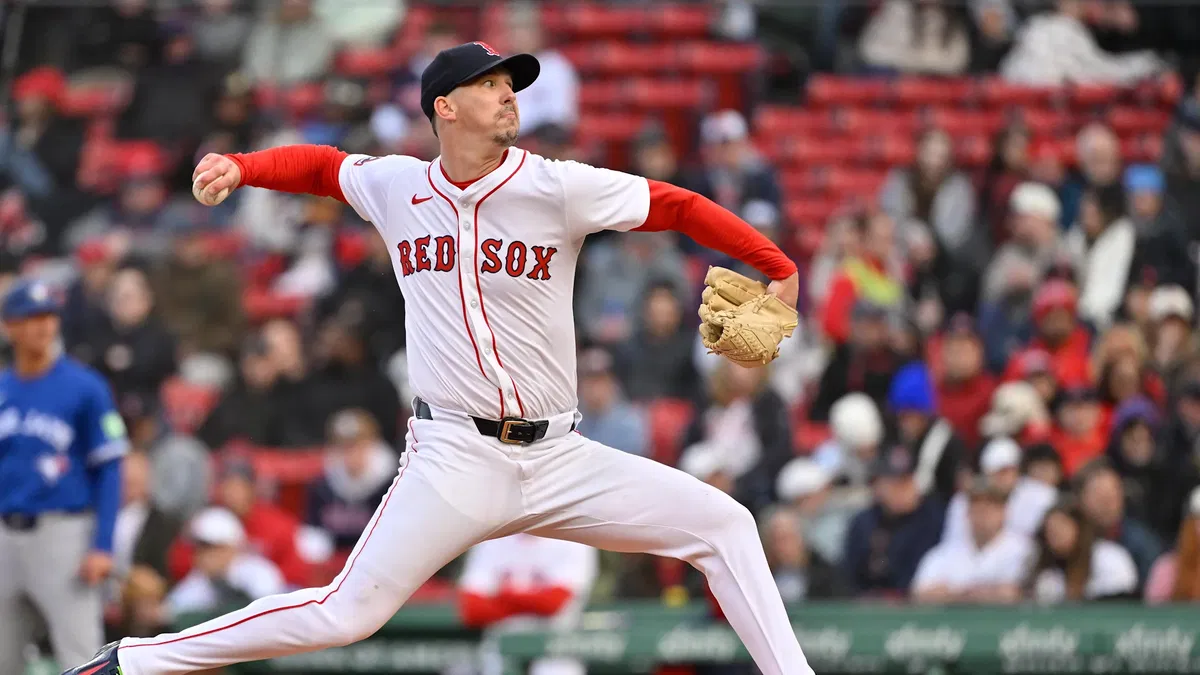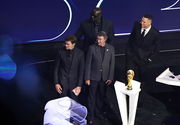
Imago
Eric Canha-Imagn Images

Imago
Eric Canha-Imagn Images
Another day, another blown call, and MLB finds itself under the microscope yet again. It now looks like this season has been anything but smooth when it comes to officiating, with a string of high-profile errors casting a long shadow over the game. Well, this time the Red Sox’s pitcher, Walker Buehler, paid a high price for the consequences of the blown-up call.
Watch What’s Trending Now!
The latest controversy erupted during the Mets-Red Sox clash, where a clearly missed call ignited tempers on both sides. Now you know what would be followed. Yes, a swift fallout. Two ejections, a frustrated dugout, and a fan base left shaking its head in disbelief. It’s become a familiar script, one that has fans wondering.
So, what will it take to bring meaningful change to MLB umpiring? As the season rolls on, the pressure for accountability and reform is only growing louder. Onlookers and analysts alike have begun to ask the uncomfortable question. Is this just a rough patch, or is the system fundamentally broken?
ADVERTISEMENT
"that was right down the middle"
"get back on the mound" pic.twitter.com/R3B3T76fSN
— Red Sox Stats (@redsoxstats) May 20, 2025
“Get back on the mound.” That was the first response from the home-plate umpire, Mike Estabrook. The arguments start here, and the latest footage shows how Estabrook’s call ignited the moment.
The issue started when Walker Buehler’s 1-0 pitch to Juan Soto appeared to catch the strike zone. But with Francisco Lindor attempting to steal second, catcher Carlos Narvaez quickly popped up to make a throw. This might have affected the framing of the pitch. Possibly! Estabrook called it a ball, prompting a sharp reaction from Buehler, who twice told Estabrook, “That was right down the middle.“
ADVERTISEMENT
Estabrook ordered Buehler to return to the mound, but after further words were exchanged, Buehler was ejected. Red Sox manager Alex Cora rushed out to defend his pitcher and was ejected moments later, arguing that Estabrook was too quick with the ejection.
Here comes the fans. The new footage shared by the Red Sox Stats over their X handle clearly shows the pitcher as a strike with no connection between the ball and bat. Hence, it caused Walker Buehler to use a few f-bombs, further amplifying the situation. While the game eventually went in the Red Sox’s favor by 2-0, the situation is still not sitting well with the fans.
ADVERTISEMENT
Fans are directly calling out the home-plate umpire amid the existing demand to implement ABS in MLB.
Fans’ outrage all over against Walker Buehler’s ejection
Over the blown-up call, fans are calling out Estabrook for standing by his decision and offering no chance for Cora and Buehler to defend.
ADVERTISEMENT
Ump should lose his job. Can’t have a fragile ego and be an ump
— Austin (@austinchap1621) May 20, 2025
One of the persistent criticisms of MLB’s umpiring is the inflexibility of some umpires when confronted with questionable calls. In an era where technology makes ball-and-strike accuracy visible to everyone in the stadium, fans and players alike have grown increasingly frustrated with calls that clearly miss the mark. Well, rather than de-escalate, too often these umpires double down, leading to unnecessary ejections and confrontations that hurt the quality of the game. It’s not about firing a single umpire, but for MLB to introduce a new way of umpiring.
“Man talking bout ‘get back on the mound’ when he already standing there, I woulda lost my mind too.” One fan picked the right moment from the clip, where the umpire seemed to be asking Buehler to get back to the mound, while the latter was standing there only whole time. Well, it seems like the umpire asked Buehler to start pitching over arguing. But again, it proves the lack of accountability and the apparent unwillingness of some umpires to admit error or allow for any form of challenge or review in these situations.
ADVERTISEMENT
Robo umps cannot come fast enough
— WagonMan (@BostonExpat412) May 20, 2025
If you think MLB is slow in implementing robo-umpire or ABS in place, then you are not alone. With the increasing blown-up calls, demand for the ABS is increasing. The Automated Ball-Strike System uses high-speed cameras and radar (such as Hawk-Eye or TrackMan) to determine whether a pitch is a ball or strike, based on its trajectory and position as it crosses the strike zone. The system relays the call to the umpire, who then signals it. Hence, the best way to ensure accuracy and obviously minimum ejections.
Top Stories
Blue Jays’ Bo Bichette Ambitions Dwindle as Red Sox’s Alex Bregman Backup Plan Confirmed

Yankees’ Cody Bellinger Hopes Fade Fast as Phillies Plan Desperate Push Amid Kyle Schwarber Uncertainty, per Insider

Aaron Judge’s Public Appearance Alongside Shaq, Tom Brady & Wayne Gretzky Turns Embarrassing for the Yankees Captain

Blue Jays Clash With Red Sox Over 29-Year-Old Japanese Star as Mets Fall Behind, per Report

Who Is Jazz Chisholm Jr.’s Fiancée? Everything You Need to Know About Ahna Mac

Well, among all these controversies, one thing MLB has done right by putting body cams on the umpires. “Umpire cams were a fantastic idea,” one fan highlighted. With an umpire cam, fans and analysts can better judge how accurate an umpire’s call was, seeing the same angle he did. It narrows the gap between the ump’s perspective and the public’s expectations, and it exposes just how much framing by catchers can deceive the eye, even from a close view. So, now you know how you got the most accurate angle of Walker Buehler’s argument with the umpire.
ADVERTISEMENT
ABS now. Enough of these clownshoes umps that can’t call balls and strikes and think people pay money to see their bullshit.
— salty brien(⚡️):} (@brienyc) May 21, 2025
Let’s be honest about one thing. Fans are storming the ballparks hoping to see a great product, and not to see the blown calls. Here, the introduction of ABS surely enhances the fan experience. How? Well, with ABS, umpires call the game as usual, but each team gets a limited number of challenges (3 per game) to dispute ball/strike calls. Now, if the ABS shows the umpire was wrong, the call is overturned, and the team retains the challenge. Yes, countering the decision shouldn’t result in ejections. MLB, are you listening?
Fortunately, the game went in favour of the Red Sox, otherwise, the blown-up call would have been further scrutinized. Now it’s high time for MLB to bring the possible changes to ensure a good product for the fans.
ADVERTISEMENT
ADVERTISEMENT
ADVERTISEMENT
ADVERTISEMENT

